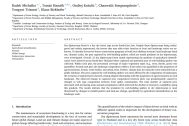Obsah
Dry dipterocarp forest is a key dry forest type across South-East Asia. Despite these dipterocarps being endangered and widely unprotected, the factors that may affect their function at local and landscape scales are unknown. To identify drivers for future conservation programs at both local (habitat structure) and landscape (land use, climate) scales, the prey captured by web-building spiders, which are model predators in dry dipterocarps, were investigated. Overall, 21 dry dipterocarp forest stands representing the gradient of agricultural intensification were selected across North-East Thailand where captured and potential prey of web-building spiders was collected. Within each plot, the percentual coverage of major vegetation types (e.g., trees, shrubs, grass) was quantified. Around each plot, the landscape composition within a 5 km radius was quantified as the proportion of agroecosystems, forests, water bodies, and urban areas. Further, climate data for each plot were extracted from a public database. The prey captured by web-building spiders was most affected by the composition of landscapes
the evenness of captured prey showed a hump-shaped relationship with the proportion of agroecosystems in each landscape. The observed change in captured prey composition between plots was predominantly caused by changes in web type composition between local spider communities. The total number of captured prey decreased with increasing mean annual precipitation which mirrored the decline of total prey availability along this gradient. The results indicate that the predation by web-building spiders in dry dipterocarps is most threatened by changes in rainfall pattern and land-use change, specifically by agricultural intensification at the landscape scale.



